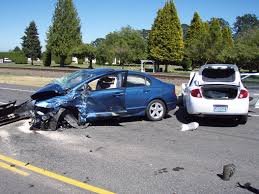According to statistics, mechanical failures are a factor in 12% to 13% of all auto accidents. In most cases, the mechanical failures can be attributed to normal wear or a lack of proper vehicle maintenance, not poor design or manufacturing defects (though there have been plenty of examples of the latter over the years).
Although mechanical failures are involved in only a small percentage of all auto accidents, they still represent a risk factor. So why take unnecessary chances? The risk of having an auto accident due to mechanical failure can be greatly reduced by taking better care of your car:
- Check the inflation pressure in all of your tires regularly (at least once a week, or when you get gas, and always before a long trip). Inflate tires to the recommended pressure in your owner’s manual or the tire inflation guide decal in the glove box or door pillar.
- Check your tires for unusual or uneven wear, and replace the tires if they are worn down to the wear bars on the tread. Tires more that are more than six years old should also be replaced.
- If your brakes are making noise, if the brake pedal is low or sinks to the floor, if the pedal pulsates or feels soft or spongy when you apply the brakes, or the brakes pull to one side, your vehicle has a brake problem that needs to be diagnosed and repaired. Don’t drive with bad brakes.
WARNING: If the red BRAKE warning light comes on when you apply the brakes, your car may have a serious brake problem that requires immediate attention. Your vehicle may be unsafe to drive.
If the amber ABS warning light comes when you apply the brakes, or if the ABS warning light remains on all the time, your ABS system has a fault and has disabled itself. This means your ABS system cannot intervene if you need it during a hard panic stop or when braking on a slick road.
- Check your wipers . If the blades are chattering or streaking, or the rubber is cracked or torn, replace the wiper blades. Replacing the wiper blades yearly is a good idea.
- Check your lights. Make sure all the lights work, including the brake lights and turn signals.
- If your steering feels loose, the steering wanders while driving straight or pulls to one side, have your steering linkage and suspension inspected for worn or damaged parts.

